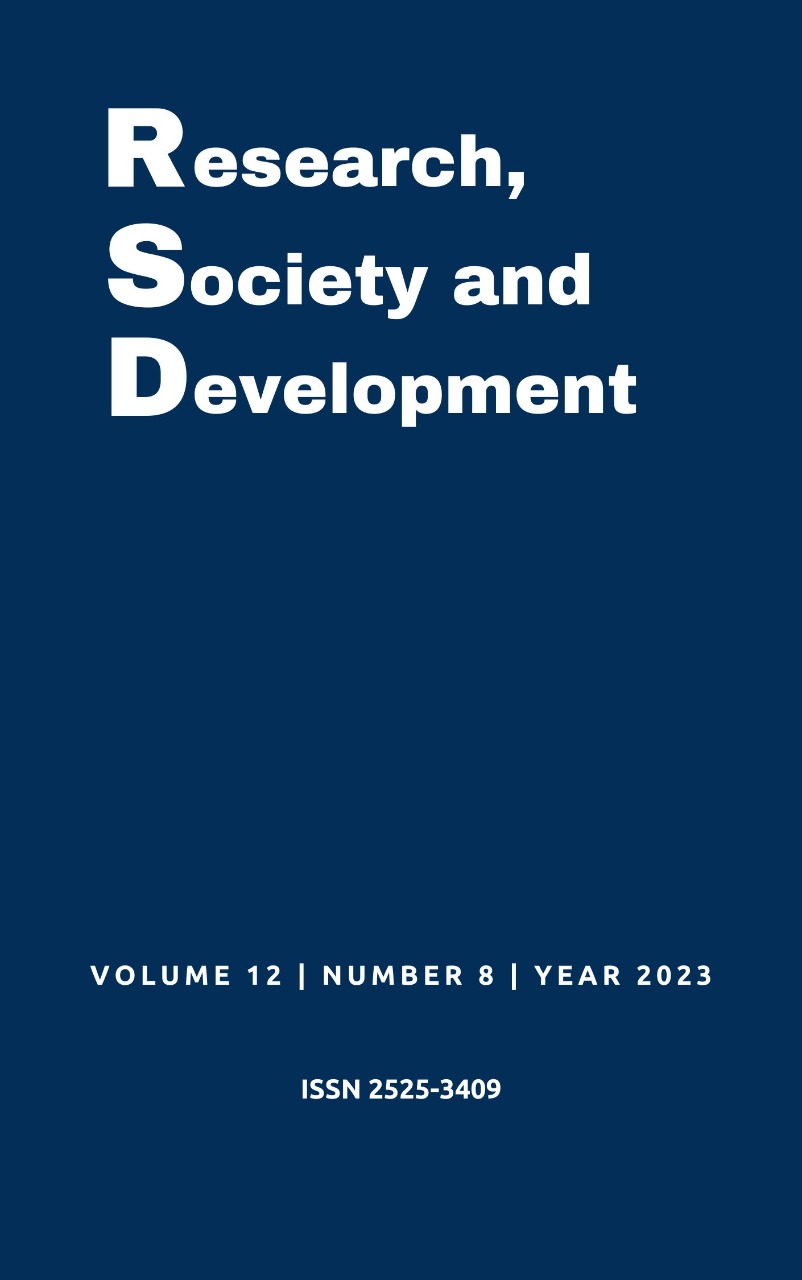Haff syndrome: An integrative review
DOI:
https://doi.org/10.33448/rsd-v12i8.42858Keywords:
Rhabdomyolysis, Public health, Myoglobinurie.Abstract
Haff syndrome, or black urine disease, is triggered by the consumption of fish contaminated by a type of thermostable toxin, which is not destroyed even after its cooking. Not yet precisely identified, this toxin can trigger manifestations in the body that can range from mild symptoms to a picture of intense severity, when there is the development of rhabdomyolysis and renal impairment of the individual. Thus, early investigation and exclusion of differential diagnoses is of fundamental importance in order to start treatment as soon as possible. In this perspective, the objective of this review is to analyze the main clinical manifestations of the disease of black urine disease. This study is an integrative literature review, in which the platforms PubMed, SciELO, LILACS and Google Scholar were used as a search base for research of the scientific literature published between the years 2010 to 2023, in the Portuguese language.
References
Amorim, M. Z., Machado, M., Hackney, A. C., De Oliveira, W., Luz, C. P. N., & Pereira, R. (2014). Sex differences in serum CK activity but not in glomerular filtration rate after resistance exercise: is there a sex dependent renal adaptative response? The journal of physiological sciences, 64, 31-36.
Bosch, X., Poch, E., & Grau, J. M. (2009). Rhabdomyolysis and acute kidney injury. New England Journal of Medicine, 361(1), 62-72.
Carvalho, G., de Almeida, L. P., Silva, V. V., Costa, S. C., Fim, C. S., Pontes, F. M. C., & de Souza Moreira, C. (2021). Aspectos relevantes sobre as intoxicações pelo consumo de pescado. Avanços em Ciência e Tecnologia de Alimentos, Espírito Santo, 4, 118.
Conforto, E. C., Amaral, D. C., & Silva, S. d. (2011). Roteiro para revisão bibliográfica sistemática: aplicação no desenvolvimento de produtos e gerenciamento de projetos. Trabalho apresentado, 8.
Cultural, A. A., & Ferreira, D. G. (2012). Causas, efeitos e tratamento da Rabdomiólise.
Dantas, H. L., Costa, C. R. B., Costa, L. D. M. C., Lúcio, I. M. L., & Comassetto, I. (2022). Como elaborar uma revisão integrativa: sistematização do método científico. Revista Recien-Revista Científica de Enfermagem, 12(37), 334-345.
de Araújo, R., Santos, H. S. P., Silva, S. B., Leal, S. M. S., Araújo, E. M., de Jesus Barbosa, B., & de Sousa Brandão, F. A. (2022). Doença de Haff: Revisão. Pubvet, 16(09).
Feng, G., Luo, Q., Zhuang, P., Guo, E., Yao, Y., & Gao, Z. (2014). Haff disease complicated by multiple organ failure after crayfish consumption: a case study. Revista Brasileira de Terapia Intensiva, 26, 407-409.
Line, R. L., & Rust, G. S. (1995). Acute exertional rhabdomyolysis. American family physician, 52(2), 502-506.
Machado, M., Zini, E. N., Valadão, S. D., Amorim, M. Z., Barroso, T. Z., & de Oliveira, W. (2012). Relationship of glomerular filtration rate and serum CK activity after resistance exercise in women. International urology and nephrology, 44(2), 515-521.
Martelli, A., Delbim, L., Hunger, M. S., Magalhães, R. A., & Zavarize, S. F. (2021). Fisiopatologia da Síndrome de Haff e progressão para rabdomiólise. Revista Faculdades do Saber, 6(13), 1002-1009.
Matos, G. d. C. B. d. (2022). Doenças de transmissão hídrica e alimentar transmitidas por alimentos de origem animal: revisão.
Moher, D., Liberati, A., Tetzlaff, J., Altman, D. G., & Grupo Prisma*. (2009). Itens de relato preferidos para revisões sistemáticas e meta-análises: a declaração PRISMA. Anais de medicina interna, 151(4), 264-269.
Moreira, L. M., Cardoso, K. B., de Sousa Puerro, M. A., de Sousa Ferreira, T. M., de Morais Cardoso, Y., & Araújo, M. D. (2023). Síndrome de Haff com insuficiência renal aguda após ingesta de peixe. Revista Eletrônica Acervo Saúde, 23(2), e11671-e11671.
Raposo, J. N., João, A., Namora, J., & de Carvalho, Á. (2002). Rabdomiólise-breve revisão, a propósito de um caso. Medicina Interna, 9(2), 80-84.
Reese, J. M., Fisher, S. D., & Robbins, D. P. (2012). Exertional rhabdomyolysis: attrition through exercise, a case series and review of the literature. Journal of Special Operations Medicine: a Peer Reviewed Journal for SOF Medical Professionals, 12(3), 52-56.
Ribeiro, L. d. S. (2022). Síndrome de haff: a importância do controle de qualidade dos pescados.
Tolesani Júnior, O., Roderjan, C. N., Carmo Neto, E. d., Ponte, M. M., Seabra, M. C. P., & Knibel, M. F. (2013). Haff disease associated with the ingestion of the freshwater fish Mylossoma duriventre (pacu-manteiga). Revista Brasileira de Terapia Intensiva, 25, 348-351.
Viana, M. B. L., da Silva, S. C. M., Pinheiro, T. W. N., & de Moraes, T. M. (2023). Síndrome de Haff e seus desafios para a saúde pública: uma revisão integrativa. Research, Society and Development, 12(5), e14112541587-e14112541587.
Vieira, G. (2022). Método de Avaliação do Índice de Qualidade (MIQ) para verificação do frescor do pescado.
Zu Jeddeloh B. (1939). Haffkrankheit. Ergeb Inn Med Kinderheilkd, 57, 138-182.
Downloads
Published
Issue
Section
License
Copyright (c) 2023 Ana Karoline de Almeida Mendes; Mayara Pessoa Feitosa ; Kleyton Alves Aguiar da Rocha ; Luana Bogéa Ribeiro; Gabriel Abreu Bacellar de Souza Martins; Natália Mendonça Oliveira; Janilene da Silva Siqueira; Gabrielly Gonçalves de Oliveira Sobrinho

This work is licensed under a Creative Commons Attribution 4.0 International License.
Authors who publish with this journal agree to the following terms:
1) Authors retain copyright and grant the journal right of first publication with the work simultaneously licensed under a Creative Commons Attribution License that allows others to share the work with an acknowledgement of the work's authorship and initial publication in this journal.
2) Authors are able to enter into separate, additional contractual arrangements for the non-exclusive distribution of the journal's published version of the work (e.g., post it to an institutional repository or publish it in a book), with an acknowledgement of its initial publication in this journal.
3) Authors are permitted and encouraged to post their work online (e.g., in institutional repositories or on their website) prior to and during the submission process, as it can lead to productive exchanges, as well as earlier and greater citation of published work.


